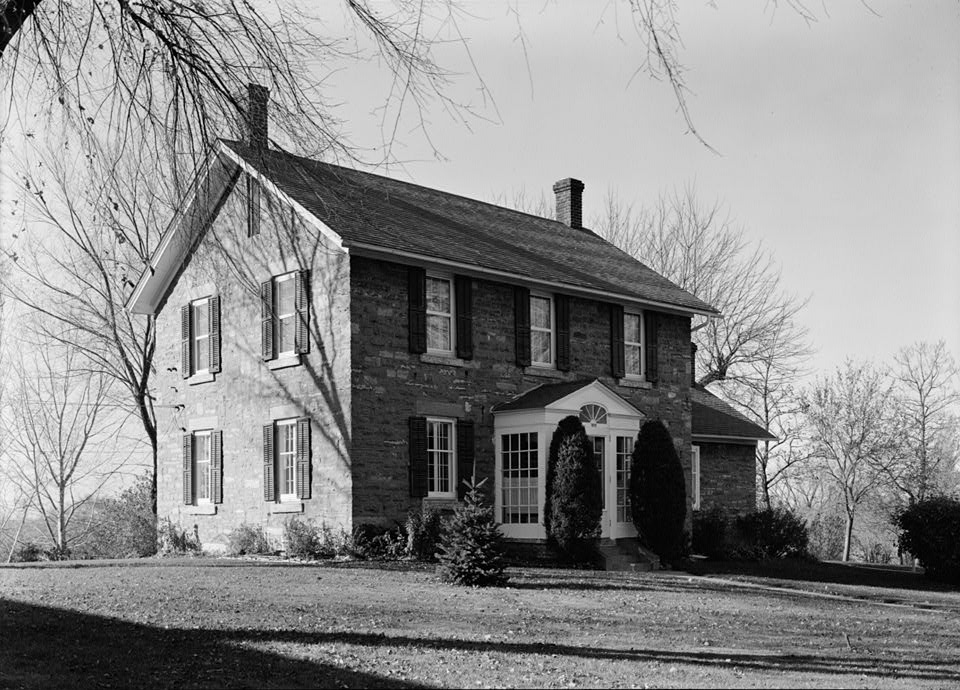Frederick Spangenberg House on:
[Wikipedia]
[Google]
[Amazon]
The Frederick Spangenberg House is a historic house in
 Frederick Spangenberg was a German immigrant who built a prosperous
Frederick Spangenberg was a German immigrant who built a prosperous
Saint Paul, Minnesota
Saint Paul (abbreviated St. Paul) is the List of capitals in the United States, capital of the U.S. state of Minnesota and the county seat of Ramsey County, Minnesota, Ramsey County. Situated on high bluffs overlooking a bend in the Mississip ...
, United States. It was built from 1864 to 1867 as the residence of a farm in what was then rural land outside the urban center. The house was listed on the National Register of Historic Places
The National Register of Historic Places (NRHP) is the United States federal government's official list of districts, sites, buildings, structures and objects deemed worthy of preservation for their historical significance or "great artistic v ...
in 1976 for having local significance in the theme of architecture. Now enveloped by a 20th-century residential neighborhood, it was nominated for being one of the oldest limestone farmhouses preserved in Saint Paul.
History
 Frederick Spangenberg was a German immigrant who built a prosperous
Frederick Spangenberg was a German immigrant who built a prosperous dairy farm
Dairy farming is a class of agriculture for long-term production of milk, which is processed (either on the farm or at a dairy plant, either of which may be called a dairy) for eventual sale of a dairy product. Dairy farming has a history that ...
and milk-distribution business. He also designed this house for himself and his wife Anna. Its yellow limestone
Limestone ( calcium carbonate ) is a type of carbonate sedimentary rock which is the main source of the material lime. It is composed mostly of the minerals calcite and aragonite, which are different crystal forms of . Limestone forms whe ...
walls came from banks of the Mississippi River
The Mississippi River is the second-longest river and chief river of the second-largest drainage system in North America, second only to the Hudson Bay drainage system. From its traditional source of Lake Itasca in northern Minnesota, it f ...
and hauled by stone-boat
A stone-boat is a type of sled (sledge) for moving heavy objects such as stones or hay bales. Originally they were for animal-powered transport used with horses or oxen to clear fields of stones and other uses and may still be used with animals ...
over snow to the building site. When the house was under construction, the Spangenbergs lived in a log cabin
A log cabin is a small log house, especially a less finished or less architecturally sophisticated structure. Log cabins have an ancient history in Europe, and in America are often associated with first generation home building by settlers.
Eur ...
on one end of the property, near where Jefferson and Cretin avenues intersect today. When completed in 1867, the house was surrounded by an dairy farm, well outside the Saint Paul city limits.
Today the house is surrounded not by fields and barns but by the paved streets and ample houses of the Macalester–Groveland neighborhood. Sited on a wooded lot, the house at 375 Mount Curve Boulevard—a two-story Greek Revival
The Greek Revival was an architectural movement which began in the middle of the 18th century but which particularly flourished in the late 18th and early 19th centuries, predominantly in northern Europe and the United States and Canada, but ...
with , random coursed walls—is somewhat obscured from the street by tall hedges. A one-story appendage originally served as a kitchen but was converted into a sitting room in 1932 by two of the Spangenberg sons, who lived in the house after their parents' deaths. The sons also transformed the first-floor bedroom into a kitchen, the parlor into a dining room, and one of the four upstairs bedrooms into a bathroom.
In 1954 the Spangenbergs' youngest granddaughter, Gertrude M. Yates, and her husband moved in and updated the interior while preserving its historic integrity. Then almost a century old, the house still contained a wine cellar complete with wooden casks and wine press, paddles and crocks for butter- and cheesemaking
Cheesemaking (or caseiculture) is the craft of making cheese. The production of cheese, like many other food preservation processes, allows the nutritional and economic value of a food material, in this case milk, to be preserved in concentrat ...
, and a cabbage cutter used for large-scale production of sauerkraut
Sauerkraut (; , "sour cabbage") is finely cut raw cabbage that has been fermented by various lactic acid bacteria. It has a long shelf life and a distinctive sour flavor, both of which result from the lactic acid formed when the bacteria ferme ...
—a source of vitamins in the winter. The Yates family lived in the house until 1972, marking the end of the Spangenberg era. It was listed on the National Register of Historic Places in 1976.
See also
* National Register of Historic Places listings in Ramsey County, MinnesotaReferences
{{DEFAULTSORT:Spangenberg, Frederick, House 1864 establishments in Minnesota Federal architecture in Minnesota German-American culture in Minneapolis–Saint Paul Houses completed in 1867 Houses in Saint Paul, Minnesota Houses on the National Register of Historic Places in Minnesota National Register of Historic Places in Saint Paul, Minnesota